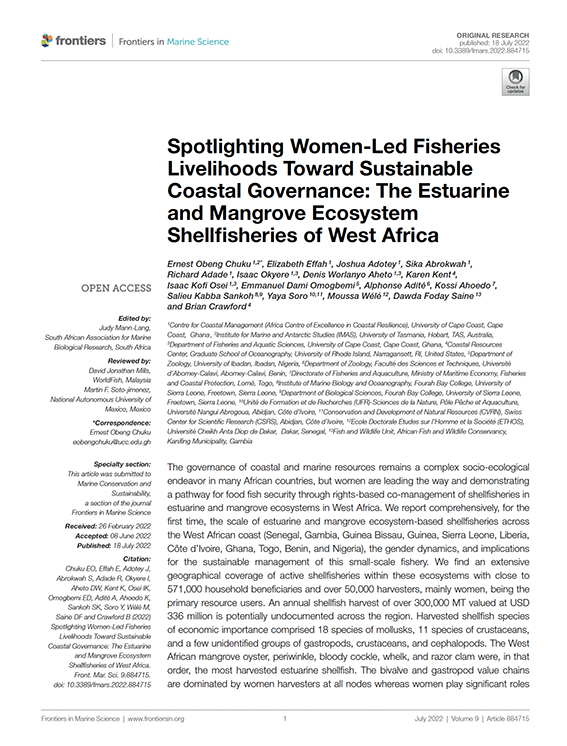Country
Profiles
Country
Networks
Country
Associations

Spotlighting Women-Led Fisheries Livelihoods Toward Sustainable Coastal Governance: The Estuarine and Mangrove Ecosystem Shellfisheries of West Africa
on Jul 2022

Mangrove ecosystems mapping in parts of Ghana and The Gambia for sustainable regeneration and utilization
Abstract
This study was conducted in parts of Ghana and The Gambia using remote sensing and participatory geographic information system (PGIS) to map mangrove vegetation and associated land use land cover types. The selected sites support shellfishery activities, and mangrove loss threatens ecosystem functionality and local communities’ livelihoods. The results revealed that mangroves are more fragmented and declining in Ghana sites, while in The Gambia, they are more extensive and stable, with a clear zonation of Rhizophora and Avicennia species. PGIS revealed that communities value mangrove species differently, informing the management systems. Avicennia species that were more abundant in Ghana sites were mainly used for livelihood activities such as fuelwood and the construction of fish traps. Rhizophora species that were more dominant in The Gambia sites have better oyster attachments due to their root systems and were more valued by the shellfishing communities. Triangulated results from remote sensing and PGIS established various drivers and threats to mangrove vegetation, including mangrove dieback, illegal harvesting, soil salinity, land use changes/conversion, waste dumping/pollution, and the effects of climate change. Lessons for sustainable mangrove area co-management included context-specific interventions based on livelihood needs, continuous community awareness, capacity development for effective mangrove restoration and conservation, and diversification of livelihood options. It is also crucial to develop the enabling environment through policies that strengthen co-management, local and national governance systems, and enforcement of existing policies. The study reiterated the value of integrated resource mapping and results validation with stakeholders who are either users or managers of these resources.
Keywords: Coastal management, Remote sensing, Shellfisheries, Natural resources mapping, Mangroves, Participatory GIS, Land use land cover
on Mar 2025
